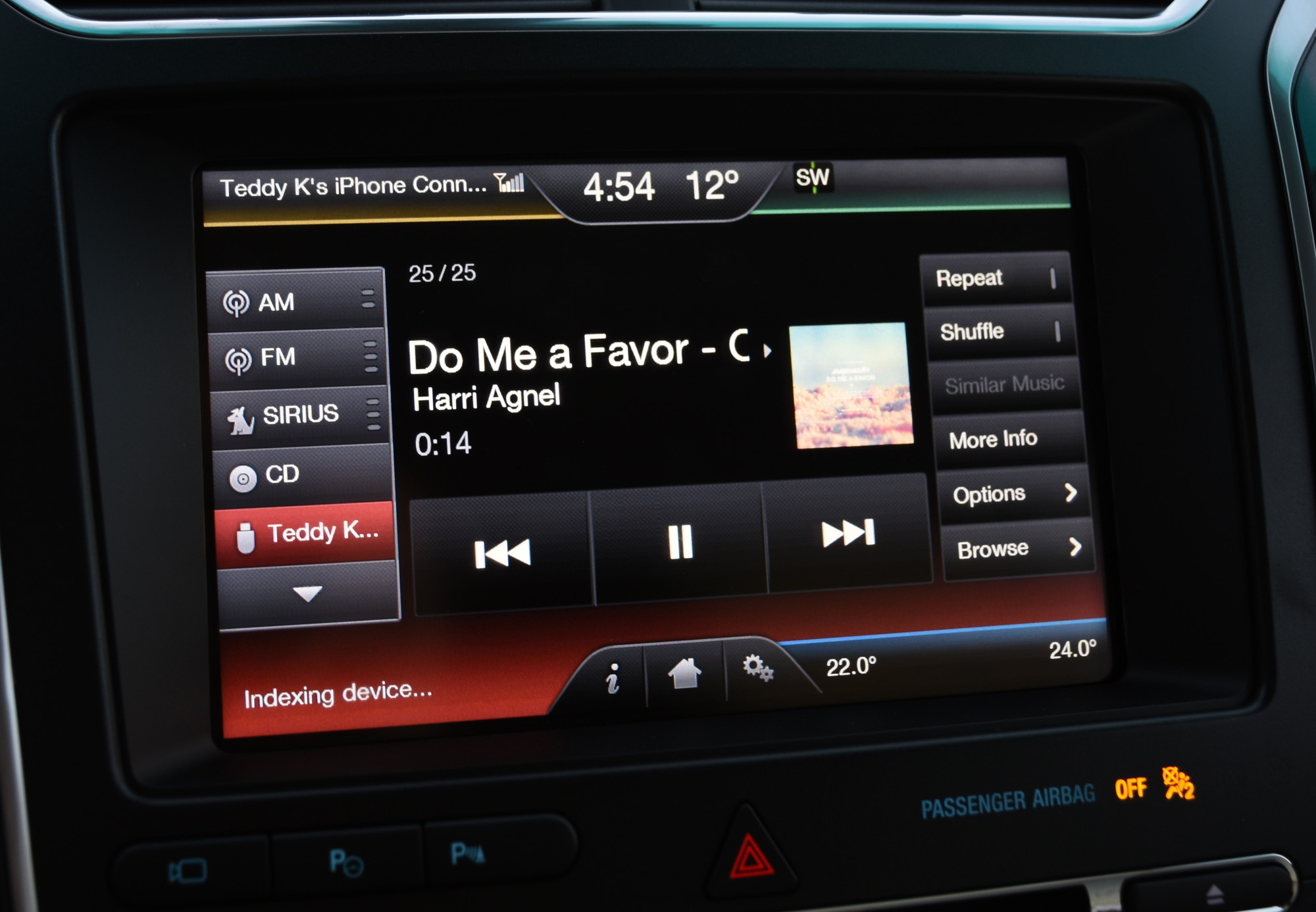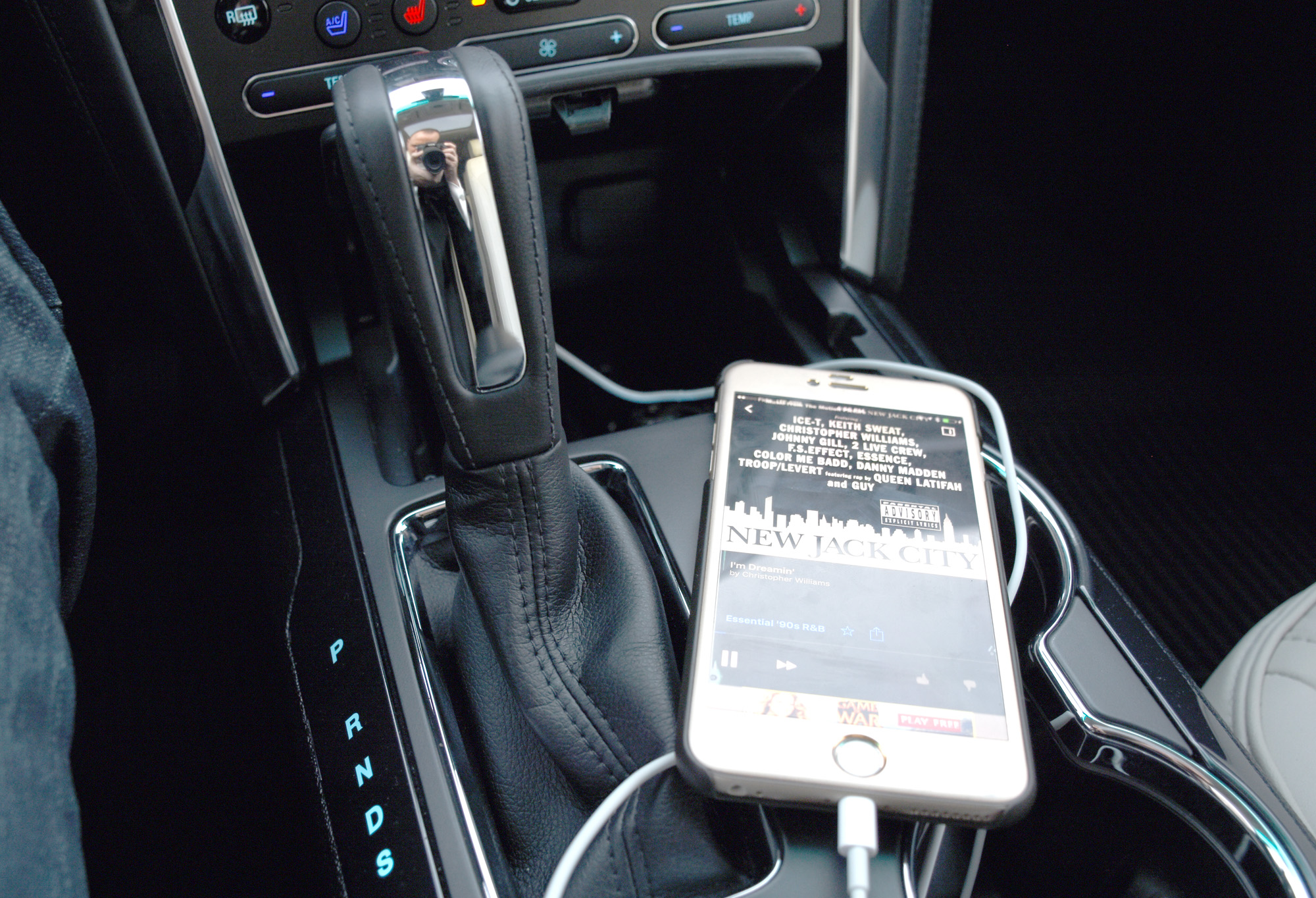
Platinum. The word itself is supposed to evoke a sense of achievement, of an elegance and class that pedestrian alternatives could never hope to attain.
Terms like these are all too common in the automotive world, so it shouldn’t come as a surprise that Ford would go with such a moniker with the Sony-built premium sound system in the 2016 Ford Explorer.
Much like video resolution mattered so much 10 years ago (and still does, for the most part), audio fidelity may be poised for a reformation of its own. The download and MP3 era reduced sound quality to a point where the masses have either wallowed in stasis or edged backward.
The Platinum system doesn’t set out to right those wrongs or kickstart a revolution, but it does present an interesting set of circumstances where the primary music source — smartphones — clashes with the expensive layout inside the cabin.
The basics
The base price of the 2016 Explorer is $33,000, and that goes up to between $59,099 and $64,339 for the Explorer Platinum. There are various different upgrades that differentiate between the base and Platinum models beyond just the sound system, but any way you slice it, you are paying a premium to get all the goods.
Notably missing is Sync 3, Ford’s latest iteration of its infotainment system. Why is that the case? Likely because the development cycle had begun before Ford could integrate the new platform into the vehicle. That will no doubt be rectified with the 2017 model, but for now, the older Sync with MyFord Touch will have to do, since there is no way to upgrade.
I first saw the system in action at a press event in Toronto in October, and the demo music I heard was a mix of classical, rock and pop, all in lossless WAV files playing off a USB stick. Self-respecting audiophiles might be sticklers for the source and file format of the music they listen to, but most users generally play their tunes from mobile devices in the car, which usually aren’t audiophile-level sources.
My intention was to find out how much of a difference an expensive car audio system can make when the lion’s share of music is coming from streaming services or lower bitrate audio files. Options aren’t all that abundant when it comes to Hi-resolution audio, so this turned out to be an interesting experiment for the weeklong test drive I had with the vehicle.
Design and setup
The nuts and bolts of the Platinum system are impressive for a factory stereo. There are 12 high-power speakers distributed in 10 locations within the cabin, all driven by a new Class D amplifier so as not to strain the speakers. All told, they can pump out 500 watts.
Then there are fancy resulting software features like Clear Phase and Live Acoustics. Clear Phase is meant to play “crystal-clear music as the artist intended,” while Live Acoustics is supposed to deliver a true concert hall experience. In other words, this system isn’t like the old massive speakers and subs in souped-up cars with rumbling bass and rattling trunk doors of days gone by. It can get really loud, yes, but the feeling it aims to evoke is one of being at a concert, not a nightclub.
To hammer this home, Sony used an algorithm to “authentically reproduce the sound quality and signature ambience of concert halls in Amsterdam, Berlin and Vienna.” Over 100 hours reportedly went into tuning it to making it what Ford and Sony consider to be the “finest audio experience on the road.”
What’s not entirely clear is what musical genres or playback sources were primarily used to reach this happy medium. I got evasive answers when asking that at the press event, but based on my experience, it’s clear classical and orchestral compositions were the foundation. Getting the surround effect of that just right should probably trickle down to less complex recordings that are so common in modern music today.
Playback with smartphones offers three options: Bluetooth streaming, USB and Aux-In. Because the older version of Sync is used here, there is no Spotify integration, nor any other music integration, save for SiriusXM, to speak of. Calls are easy to manage whether plugged in or connected via Bluetooth, and the Platinum system does offer some decent clarity for hearing people on the other end, though reception ultimately determines how good a person’s voice will sound.
One of the key aspects of the system’s settings is the ability to switch between stereo and surround sound modes. The Digital Signal Processor (DSP) is the key to this transition, triggering the concert hall effect in the latter setting. Over and above that, standard bass, treble, balance and fade sliders round out the customization options.
Smartphone integration
Unfortunately, “integration” would be a stretch in this case, but the inclusion of Siri Eyes Free is a boon for iPhone users. Using it acts as a shortcut to making and taking calls, sending or responding to text messages and selecting music to play from the device’s internal storage.
Non-iPhone users don’t get the same love, however, but no matter which device is in use, the basics of Bluetooth will work. Sync’s own voice recognition is limited in that it can’t really pluck much from a phone, but at least contacts can be extracted for hands-free calls.
The lack of Sync 3 on a vehicle at this price point (and 2016 model year) does feel like a major omission. It smarts even more because missing out on Sync 3 also means losing out on CarPlay and Android Auto in the future. The hardware in the Explorer Platinum isn’t compatible with either platform, particularly because the 8-inch touchscreen is resistive, not capacitive.
Ford’s AppLink has never hit Canada after being present for a number of years in the U.S., so app integration is a non-starter, too.

Music playback
To get a good feel for what the Platinum could deliver, I used a wide variety of music sources. Streaming services, like Spotify Premium, Apple Music, Songza, SoundCloud, along with Tidal and Soundtracker. AAC and MP3s from internal storage, played with sonic boost apps, like Radsone and EQ. FLAC and WAV files played from a Sony Xperia Z5. Multiple phones were used, ranging from flagship to mid-range devices.
With such a cross-section of sources, my curiosity grew further. Was Tidal HiFi going to sound that much better than Spotify? Would FLAC files blow them all out of the water?
Audio is highly subjective, so I recognize that my two ears are different than everyone else’s, though I think some of the results are easy to grasp for anyone who would get a chance to hear this in action.
The Platinum system sounds great. There is no questioning that, and it’s easily one of the best factory systems I’ve heard to date. The surround setting grew on me quickly, though I never truly felt like it enhanced everything I was playing. Songs that have more complexities to them, especially many instruments or voices and effects spreading across channels, sounded much better. Michael Jackson’s Thriller was a good example, with the howling and Vincent Price’s haunting voiceover resonating in a way I hadn’t quite heard in a car before.
Playing Led Zeppelin remastered tracks from Spotify Premium at 320kbps offered some good depth that brought out more of John Bonham’s drums without Robert Plant’s vocals drowning out everyone else in the band. Aerosmith’s Walk This Way, while not especially complex, sounded the best I’d heard in a vehicle. Even standard modern tracks like 2Pac’s California Love, Adele’s Rolling in the Deep and Walk the Moon’s Shut Up and Dance sounded really good. Playing these in surround offered greater spatial resonance, yet at the expense of any sense of the concert hall effect the system is designed to provide.
That’s perhaps more a reflection of what music has become, but the source did matter. With all the speakers at play, it became easier to judge the limits of where the music was coming from. Songza and Soundtracker were terrible at times, lacking depth across the audio spectrum. Hardly surprising since they stream at 128kbps — passable for computer speakers or lower-quality earbuds, but muffled in a setup like this. Spotify sans Premium maxes out at 160kbps, defaulting to 96kbps in some cases. That’s just awful, whereas Premium at 320kbps sounded great.
Indeed, Tidal’s HiFi didn’t show me a demonstrable upgrade in that regard. Yes, some music did sound better, but the modern stuff? Not so much.
Internal AAC and MP3s playing off a phone using Radsone, EQ and other equalizer and sound-boosting apps did benefit from enhancements on both sides. I’ve long been a proponent of using these types of apps for boosting fidelity on non-streamed music, and yet again, they served me well when playing tracks through the Platinum system.
Even so, the FLAC and WAV files took it a step further, albeit with a catch. The biggest benefit I noted was for live performances. Sade’s Lover’s Live concert in FLAC was engrossing at the surround setting, with the various instruments, backup singers, crowd cheers and other nuances flowing through in a way I simply couldn’t otherwise appreciate with a good pair of headphones. Ditto with George Michael’s Live at the Palais Garnier Paris and Maxwell’s MTV Unplugged concerts.
Live albums or singles on Tidal HiFi had more punch and depth than the regular tracks. I even listened to some stand-up comedy from an HD video on YouTube, and came away liking the way the venue’s various sounds seemed to come through the speakers along with the comedian. If only more live concerts were available at the highest quality on YouTube.
Wrap Up
One takeaway for me is a confirmation of a prior suspicion that improving sound quality at the hardware level isn’t necessarily being matched by the software playing the music. The Platinum system exposed the limits of what Songza, Soundtracker, Free Spotify and some tracks on SoundCloud can deliver when the system captures more imperfections.
Except the Platinum system is something of an outlier. Most 2016 Ford Explorers sold won’t be of this kind, making the system more of a niche. That means fewer drivers will be exposed to what it’s capable of, and fewer still might even appreciate how music can change coming from one source to the next.
Until smartphones have almost unlimited storage, more data, faster bandwidth and better in-car integration to play music at the highest quality, the audio arms race is going to continue sputtering along. The Platinum system won’t change that, but it’s still a nice way to enjoy tunes while cruising if you’re so inclined.
MobileSyrup may earn a commission from purchases made via our links, which helps fund the journalism we provide free on our website. These links do not influence our editorial content. Support us here.





